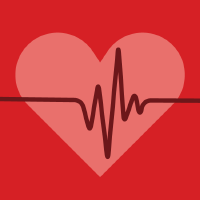Topic Editors


Biomarkers in Cardiovascular Disease—Chances and Risks, 2nd Volume
Topic Information
Dear Colleagues,
Although circulating and urinary biomarkers are now widely involved in the risk stratification and diagnosis of a wide range of cardiovascular diseases, ranging from acute coronary syndrome to any heart failure phenotypes, their predictive abilities and guided-treatment options remain to be determined. However, there is a large body of novel biomarker-guided approaches, such as micro-RNAs, pro- and anti-inflammatory cytokines, adipocytokines, myokines, cargo of secretom, metabolomics profile, extracellular vesicle labeling, etc., which are related to the prediction of adverse cardiac structural and electrophysiological remodeling, arrhythmia, thrombotic complications, heart failure, cardiorenal syndrome, pulmonary hypertension, etc. These approaches open new promising perspectives for personifying the management of cardiovascular disease in varied populations such as obesity- and diabetes mellitus-affected patients, individuals with malignancy under chemotherapy, patients with inherited and acquired cardiac defects, etc. This Topic will highlight new insights into the future diagnostic, predictive, and therapeutic potencies of biomarkers of cardiovascular diseases, as well as improve our understanding of the underlying molecular mechanisms of cardiovascular disease. Original articles, narrative and systemic reviews, meta-analyses, case reports, letters to editors, and short communications are all invited.
Prof. Dr. Alexander E. Berezin
Prof. Dr. Michael Lichtenauer
Topic Editors
Keywords
- biomarkers
- adverse cardiac remodeling
- cardiac ischemia
- atherosclerosis
- heart failure
- cardiac cachexia
- cardiorenal syndrome
- pulmonary hypertension
- cardiac toxicity
- prognosis
- management
Participating Journals
| Journal Name | Impact Factor | CiteScore | Launched Year | First Decision (median) | APC | |
|---|---|---|---|---|---|---|

Cardiogenetics
|
0.5 | - | 2011 | 23.7 Days | CHF 1400 | Submit |

Hearts
|
- | - | 2020 | 18.6 Days | CHF 1000 | Submit |

Journal of Cardiovascular Development and Disease
|
2.4 | 2.6 | 2014 | 25.7 Days | CHF 2700 | Submit |

Journal of Clinical Medicine
|
3.0 | 5.7 | 2012 | 16 Days | CHF 2600 | Submit |

Medicina
|
2.4 | 3.3 | 1920 | 17.1 Days | CHF 2200 | Submit |

MDPI Topics is cooperating with Preprints.org and has built a direct connection between MDPI journals and Preprints.org. Authors are encouraged to enjoy the benefits by posting a preprint at Preprints.org prior to publication:
- Immediately share your ideas ahead of publication and establish your research priority;
- Protect your idea from being stolen with this time-stamped preprint article;
- Enhance the exposure and impact of your research;
- Receive feedback from your peers in advance;
- Have it indexed in Web of Science (Preprint Citation Index), Google Scholar, Crossref, SHARE, PrePubMed, Scilit and Europe PMC.
Related Topic
- Biomarkers in Cardiovascular Disease—Chances and Risks (38 articles)

